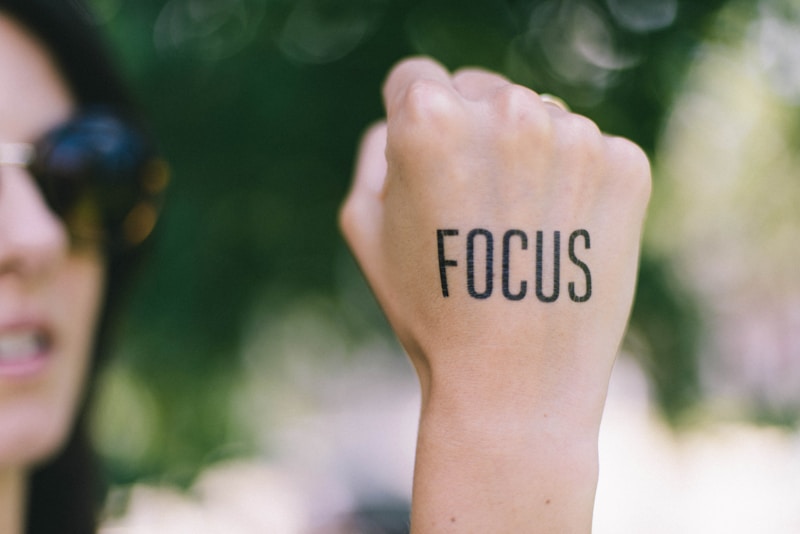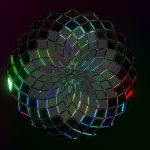What is drishti? Concisely, drishti is a focused gaze. We might have attempted to use it in yoga classes, especially when we’re endeavouring to balance in tree pose, but there is much more to this topic than meets the eye – or gaze.
Let’s put drishti under the microscope. The Sanskrit word drishti literally means ‘sight’. But in the context of yoga, drishti is more than seeing, it is about focusing the gaze on one specific point in order to move the attention of the mind inwards. It is a way of developing concentrated intention through the sense of sight.
This method of the concentrated gaze links in with both the fifth limb of yoga, pratyahara – withdrawal of the senses, as well as the sixth limb, dharana – concentration.
Why is it useful?
When we first start to do yoga, it’s hard enough understanding where to put our bodies, let along worrying about what we’re looking at while we’re doing it.
As we progress, our once-unruly bodies start to behave. Over time hamstrings lengthen, groins relax, and the pattern of where to place our bodies becomes a well-known routine that we no longer have to consciously think about – as much.
At this point, it is useful to bring drishti into the mix. Now it is not so much our bodies that are the problem, but our minds. Our sense of sight is a primary sense, which links most directly to our minds.
If we can control our gaze – and instead of letting our eyes wander over towards the clock on the wall, or the leggings of the girl in front of us – then we move one step closer to real ‘yoga’ – the union of the body with the mind.
The source of drishti
In modern-day yoga the practice of drishti come from the Ashtanga yoga methodology, founded by Sri K Pattabhi Jois. In his book Yoga Mala he states that the Sun Salutation in particular if done without the proper rules, including the specified drishti, are mere exercises and not true yoga.
Iyengar yoga doesn’t specify drishti, but the importance of the directed gaze is made clear in B.K.S. Iyengar’s seminal book, Light on Yoga, as many of his detailed instructions specify where to look. For example, in Virabhadrasana 1 (Warrior 1), he instructs, ‘Throw the head up, stretch the spine from the coccyx and gaze at the joined palms.’
The benefits of drishti
In his book Definitive Primary Series Practice Manual, Ashtanga yoga teacher Petri Räisänen explains how using drishti also brings new energy into our yoga poses:
‘One directs the gaze and flow of energy towards nine various points (nava-drishti). The energy which is directed towards the gaze also stimulates the energy channels (nadis), the energy centers (chakras), and encourages prana to flow through the nadis.’
In other words, when we bring our attention into the present and into the pose, we awaken energy that lies dormant when half our attention is either in the past or drifting into the future.
It also allows the mind to focus in the pose, drawing the attention to one still point, adding a simplicity and sense of freedom to the pose.
The nine types of drishti
The different types of drishti allow the gaze to be directed in each pose in such a way that the energy in the pose is maximised. So, for example, in seated forward bends, the padayoragram drishti can be used to extend the trunk towards the feet, while drawing the body into correct alignment.
There are nine different types of drishti, as taught in the Ashtanga yoga method. These are:
- Nasagram drishti – tip of the nose
- Bhrumadhya drishti – between the eyebrows
- Nabhi chakra drishti – navel
- Hastagra drishti – hand
- Padayoragram drishti – toes
- Parshva drishti – far to the right
- Parshva drishti – far to the left
- Angushthamadhyam drishti – thumbs
- Urdhva or antara drishti –up to the sky
Drishti for every day
The epicly awesome thing about yoga is how lessons learnt on the mat transfer over into our everyday lives and make them much, much better. Not in a hysterically fun way, but in a deep-seated, glad-to-be-alive way.
Drishti can be part of that too. The lesson of focusing the sense of sight on one thing only is an important lesson and one that is becoming harder and harder to achieve in our sensory-overload society.
I’ll give you a personal, parenting example (because my non-parenting mind seems to have been wiped). Many years ago when my son was a toddler, we used to go for walks. Most of these walks entailed me pulling him along in order to get somewhere by a certain time, while he pointed out every stick and ant along the way.
One day I decided to go for a ‘toddler walk’. Instead of having to get anywhere, the walk itself was the goal. We went round the block, once, and it took a looong time. But we stopped and looked at every bit of rubbish, and feather, and puddle. On that walk, my gaze, or drishti, was completely focused. And because of that, I remember it to this day, as a moment of true engagement with my child.













